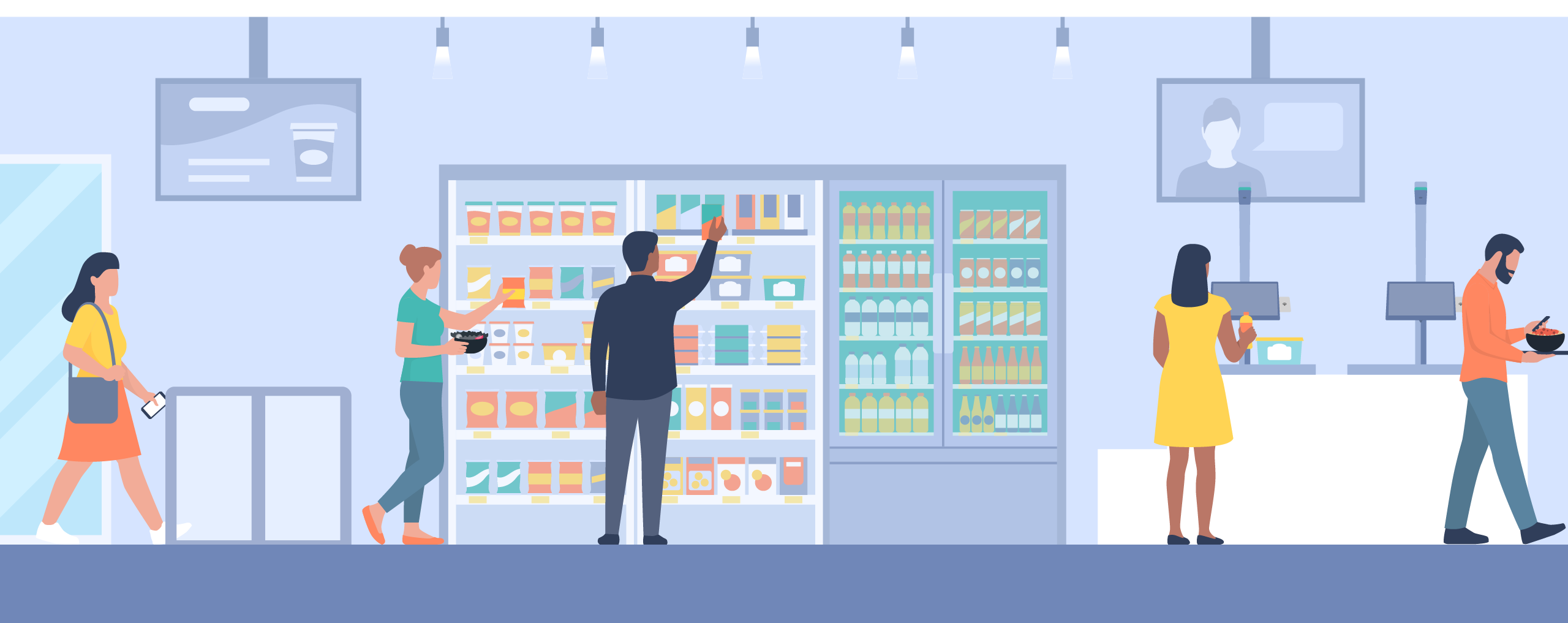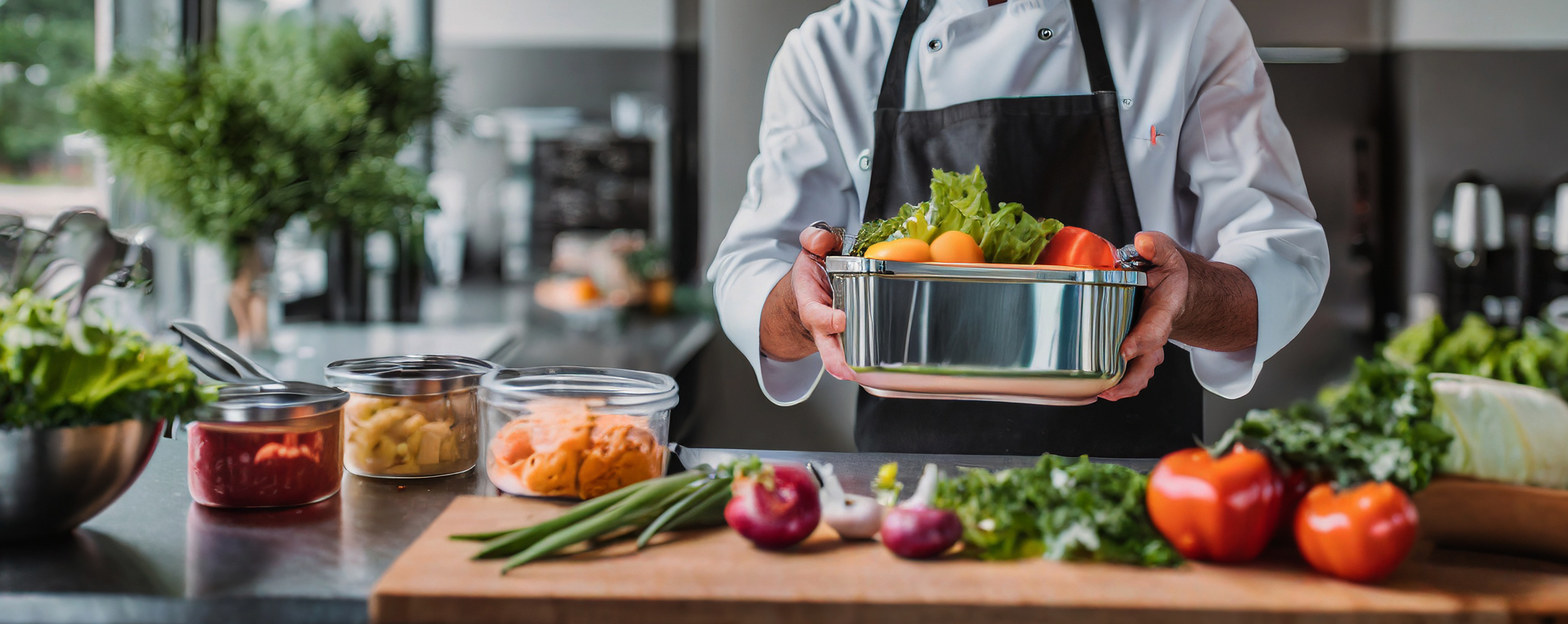What are the requirements for self-checkouts in the catering industry?
When it comes to choosing the right self-checkout system, meanwhile, the market is very diverse and specialised in different sectors. In the catering industry, for example, there are fundamentally different expectations in terms of service and thus also for the self-checkout compared to supermarkets. Self-checkouts that are specially tailored to the catering industry offer, for example, the possibility of displaying different price levels and taking into account special requests from guests. The self-checkouts that are closest to standard checkouts are those where the guest simply enters their food into the checkout system themselves.
This type of checkout has several disadvantages: On the one hand, the range of products offered by company restaurants and canteens is often very diverse, so that non-professionals need a long time to find their way around the POS screen. A well-designed user interface can reduce this problem, but not eliminate it. At least not without sacrificing the versatility of the offer.
In addition, this model is very sensitive to errors because guests often don’t know which item they have to choose (the mixed salad, the “bowl of the day” or just a side salad because they also have a main course?) or whether the drink is free with their menu.
It quickly pays off to use an intelligent system that automatically recognises the items, knows all the rules of the restaurant and consistently avoids errors. Very popular are systems that recognise the items visually because this is very accurate and flexible. The visioncheckout is one of such systems. It scans all meals that are under a camera in less than half a second and automatically books them into the POS system.
The fastest self-checkout – step by step
There are several points during checkout where the process can be sped up or slowed down considerably. To give a picture that is as broad as possible, we will first look at the checkout process in general, and then go through it step by step.gt oder auch stark verlangsamt werden kann.
Every click counts
You know it from yourself: The less familiar a screen looks, the longer it takes to find the right buttons. That’s why it’s important throughout the entire checkout process – from standing in line to leaving the POS – that customers are guided through the process as intuitively as possible. Ideally, they don’t have to click anything at all, so no mistakes can happen. For a fast process, it is therefore important to be automatically guided through the checkout. The visioncheckout start recognising articles as soon as they lie below its camera and the payment does not have to be activated manually either. So the entire checkout process does not require a single click.
Smartlights – the right routing
Self-checkouts and staffed checkouts differ only slightly in this step. If a checkout is free but not in use, this increases the waiting time for all customers. It is therefore important that waiting customers are informed as quickly as possible that a POS is free so that they do not have to wait in line for an unnecessarily long time. Cleverly used traffic light systems can guide customers and draw their attention to free checkouts. Self-checkouts have a decisive advantage: if there is a problem during a checkout process, employees are made aware of it directly and can provide support quickly.
Scanning – the linchpin of cashiering
The potentially most time-consuming process during checkout is scanning the articles. Especially with self-checkouts, it is important to save valuable time and thus speed up the entire payment process. Inexperienced “checkout beginners” need an above-average amount of time to scan each individual item. Modern systems can help here. Supermarket chains or drugstores in particular, now benefit from so-called “Scan&Go” apps, which help to scan the items already during the shopping process.
The shopping basket then only has to be transferred to the POS system and the checkout is complete. The disadvantage of this method, however, is that it is not transparent and therefore likely that individual items will be forgotten. For retail items, RFID tags are therefore a good choice. The POS system directly registers each item and enters them to the cash register very quickly. This makes manual scanning completely obsolete.
Payment - the more flexible, the better
Once all the items have been booked into the POS system, the next step is to pay for them as fast as possible. In this case, “as fast as possible” means primarily that all payment methods that customers know and like to use are supported. It is therefore important to make sure that the self-checkout providers support all payment methods such as credit cards, employee ID cards or payment apps that the POS system maps anyway and that there are no restrictions here.
Speed up, security down?!
Basically, items can be sneaked past a checkout, regardless of whether this checkout is staffed by a cashier or not. More relevant for the comparison of conventional checkouts with self-checkouts in terms of security is the case where people forget to scan individual items and therefore cause lost sales. This is almost impossible with a dedicated cashier, but self-checkouts featuring self-scanning do have deficits in this area.
Self-scanning systems often require random checks of individual customers, but these then cause an overall delay in the payment process. This does not happen with image-based systems such as the visioncheckout, as all items are recorded automatically. If an item is then taken out without having been paid for first, the system triggers an alarm and can then be checked on demand. It is therefore not necessary to intervene preventively.
Comparing self-checkout systems
visioncheckout
RFID-tags
Self-Scanning
Uncovered checkout
Yes
Yes
Yes
Intuitive process
Yes
Yes
No
Time for scanning
0.5 seconds
2 seconds
Up to 1 minute
Theft prevention
Automatically
Manually
Manually
Effort of retrofitting
Small
Very high
Medium
Overall time for checkout (including arrival and departure)
5.5 seconds
8 seconds
45 seconds up to 1 minute




